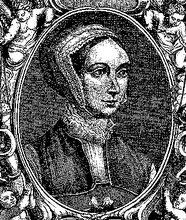 I am so glad, now that Josephine Bakhita has been canonised, that her feast day should coincide with my birthday. I ask regularly for her intercession for we who live in this age.
I am so glad, now that Josephine Bakhita has been canonised, that her feast day should coincide with my birthday. I ask regularly for her intercession for we who live in this age.I only came to know about her when she was made a canonised saint by JPII in the year 2000. But when the present Holy Father spoke at such length about her in his second Encyclical Letter (Spe Salvi) I came to realise much more her significance for our age.
She is an archetype for our age - a person who was battered and bloodied by the culture she lived in, a culture which was oblivious to the harm that it was doing to her, and a person who, to some degree, accepted the bloodying she received as a normal part of life, unaware of the real dignity of human beings and the beauty of life which they are called to live.
Today for many, the secular project administers a terrible form of bloodying and battering, and we accept this as a normal part of life. Take a look at what contraception has done in our culture; the countless babies shredded in abortions, the despair and loneliness which it has bred. Take a look at what the pagan media has done in our culture; the false expectations, the superficiality of human relatiosnhips, the sadness and the loneliness, the mockery of God and the Church ... I could go on. This saint is a great saint for our age because she symbolises in her life that which takes place in the lives of many today. And yet, her life was suddenly changed - she met Christ. Christ lifted her out of the fallen culture in which she was trapped and gave her a new life. And how did she respond? By spending the rest of her life telling people, not about the awful life she used to live, but telling people about Christ and who He was for her. Her incorrupt body lies now under an altar in a glass coffin (photo above).
What an immense privilage it is for us to be able to celebrate her feast today and to seek her powerful advocacy. And what an immense privilage to be able to celebrate the Mass in her honour each year now, on my birthday.
 As usual I am a little late in responding to things I see and hear. This article appeared in Zenit last August and I place a link to it here. It is an address given by Otto Neubauer, the leader of the Emmanual Community in Vienna, to the Holy Father and participants in a Symposium on the New Evangelisation last August at Castel Gandolfo.
As usual I am a little late in responding to things I see and hear. This article appeared in Zenit last August and I place a link to it here. It is an address given by Otto Neubauer, the leader of the Emmanual Community in Vienna, to the Holy Father and participants in a Symposium on the New Evangelisation last August at Castel Gandolfo.

















